43 mpls ldp advertise labels
Solved: MPLS LDP label advertisement - Cisco Community LDP allocates one label for each and every prefix in the RIB (except for BGP routes). The only way to heve one label allocated for the two routes in your case would be to advertise them as one aggregated route if possible. Hope this helps, Harold Ritter Sr Technical Leader CCIE 4168 (R&S, SP) harold@cisco.com México móvil: +52 1 55 8312 4915 MPLS Label Distribution: LDP Part3 - Networkers-online.com When a new LDP session is initialized and before sending any label mappings or requests, an LSR should advertise its interface addresses using one or more messages addresses. The addresses received in the address messages are used by an LSR for the mapping between peer LDP-ID and next hop addresses found in the best route in the routing table.
MPLS Label Distribution - LDP Part1 - Networkers-online.com MPLS has two type of label spaces; per interface label space and per platform label space. Per-Interface label space: MPLS labels are assigned per FEC per interface. This means that MPLS packets are forwarded based on both the incoming label and the incoming interface. This mode is used cell mode MPLS implementations.
Mpls ldp advertise labels
MPLS Label Distribution Protocol Configuration Guide, Cisco IOS Release ... The MPLS LDP Local Label Allocation Filtering feature controls the allocation of local labels through the use of prefix lists or host routes. LDP Local Label Filtering and BGP Routes The Label Distribution Protocol (LDP) default behavior is to allocate local labels for all non-Border Gateway Protocol (BGP) prefixes. Mpls ldp advertiselabels - MPLS Implementing - Cisco Certified Expert To control the distribution of locally assigned (incoming) labels by means of LDP, use the mpls ldp advertise-labels command in global configuration mode. This command is used to control which labels are advertised to which LDP neighbors. To prevent the distribution of locally assigned labels, use the no form of this command, as shown here: Solved: MPLS labels - Cisco Community mpls ldp advertise-labels for 1 ! access-list 1 permit 192.168.100. 0.0.0.255 ***** permit only the range for your loopback interface addresses ***** access-list 1 deny any Regards, Harold Ritter Sr Technical Leader CCIE 4168 (R&S, SP) harold@cisco.com México móvil: +52 1 55 8312 4915 Cisco México Paseo de la Reforma 222 Piso 19 Cuauhtémoc, Juárez
Mpls ldp advertise labels. MPLS basics: LDP ( Label Distribution Protocol) on ... - The Network DNA Enters MPLS LDP configuration mode. NDNA (config)# mpls ldp. Specifies the router ID of the local node. In Cisco IOS XR software, the router ID is specified as an interface name or IP address. By default, LDP uses the global router ID (configured by the global router ID process). NDNA (config-ldp)# router-id . Cisco IOS-XR BGP con progetti MPLS - Cisco 8. Ridistribuzione di BGP in LDP. Questo è il significato di MPLS unificato o senza interruzioni e la sua configurazione con IOS-XR: MPLS unificato con IOS-XR. Con MPLS unificato standard, esiste una LU BGP tra tutti i router PE e ABR, come mostrato nell'immagine. Advertising MPLS labels in IS-IS Advertising MPLS labels in IS-IS Historically MPLS label distribution was driven by protocols like LDP, RSVP and LBGP. All of those protocols are session oriented. In order to obtain a label binding for a given destination FEC from a given router one needs first to establish an LDP/RSVP/LBGP session with that router. draft-ietf-mpls-ldp-applicability-label-adv-03 Internet-Draft Label Advertisement Discipline for LDP FECs Apr 2014 the negotiated behavior. This document updates [] to make that fact clear, as well as updates [], [], [], [], and [] to indicate for each FEC type that has already been defined whether the label binding advertisements for the FEC are constrained by the negotiated label advertisement mode or not.
Step 2 Enable conditional label advertisement - MPLS Within the mpls ldp advertise-labelscommand, specify the neighbors to which the labels are to be sent and the networks for which the labels are to be advertised. In the example, the labels for all networks permitted by access list 90 are sent to all neighbors matched by access list 91 (in this example, that would be all TDP or LDP neighbors). LDP - RouterOS - MikroTik Documentation which label bindings should be advertised to LDP neighbors, configured in the /mpls ldp advertise-filter menu; which label bindings should be accepted from LDP neighbors, configured in /mpls ldp accept-filter menu; Filters are organized in the ordered list, specifying prefixes that must include the prefix that is tested against the filter and ... How to Configure Cisco MPLS LDP Label Advertisement (Part 1) The video focuses on LDP label advertisement on Cisco router. You will learn how to define a number range for MPLS label and control which labels are to be sent to and received from a MPLS neighbor using label filter. By default, a default route does not have a label assigned and we will show you how this behavior can be overwritten. mpls ldp advertise-labels - Technical Documentation - Support - Juniper ... Command introduced before JunosE Release 7.1.0. Description Controls the distribution of incoming labels advertised by LDP. The no version halts advertisement of all incoming labels or the specified labels. Options host-only—Advertises only labels for host routes (routes with a 32-bit mask)
mpls label advertise For LDP LSPs, the mpls label advertise command triggers LDP to delete the LSPs established before the command is executed and re-establishes new LSPs. For BGP LSPs, the mpls label advertise command takes effect only for the BGP LSPs established after the command is executed. Manual:MPLS/LDP - MikroTik Wiki LDP is a protocol defined for distributing labels. It is the set of procedures and messages by which Label Switched Routers (LSRs) establish Label Switched Paths (LSPs) through a network by mapping network-layer routing information directly to data-link layer switched paths. General Sub-menu: /mpls ldp General LDP settings. Properties Interface Segment Routing Segment IDs and MPLS Labels « ipSpace.net blog In one of my introductory Segment Routing videos, I made claims along the lines of "Segment Routing totally simplifies the MPLS control plane, replacing LDP and local labels allocated to various prefixes with globally managed labels advertised in IGP". It took two years for someone to realize the stupidity over-simplification of what I described. . Matjaž Strauss sent me this kind summary ... Configuring LDP label filtering The LDP label filtering feature provides two mechanisms, label acceptance control for controlling which labels are accepted and label advertisement control for controlling which labels are advertised. In complicated MPLS network environments, LDP label filtering can be used to control which LSPs are to be established dynamically and prevent ...
MPLS Label Filtering - GNS3vault also i enabled mpls ldp advertise-labels command in global config mode. Ill put the access list later but first i need to see labels :'(bdk says: ... mpls ldp neighbor 2.2.2.2 labels accept 1 access-list 1 permit 192.168.23. 0.0.0.255. ReneMolenaar says: April 2, 2012 at 10:16.
MPLS LDP Label Filtering Example - NetworkLessons.com Community Forum The mpls ldp advertise-labels for 1 command is used to control which labels are advertised to which LDP neighbors. The "1" at the end of the command indicates that it is the access list "1" which is configured above that will be used to filter the labels such that labels will be generated only for loopback 0.
Controlling the Advertisement of Labels via LDP - MPLS Fundamentals [Book] The syntax for this command is as follows: mpls ldp advertise-labels [ vrf vpn-name] [ interface interface | for prefix-access-list [ to peer-access-list ]] The prefix-access-list is a standard numbered access list (1-99) or named access list that lets you specify which prefixes should have a label advertised.
MPLS LDP Label Filtering Example - NetworkLessons.com Once you enable MPLS on the interfaces between the routers and LDP neighbor adjacencies have been formed, a label will be advertised for each network. With LDP however we can configure filters to decide what networks should get a label and which ones shouldn't be tagged. I'll use the following topology to demonstrate this:
mpls ladp advertise-label for - Cisco hi guys, i need a help on command "mpls ldp advertise-label for" i know that how it works with for and to.also know the function without for and to. but cant understand the effect of this command just with for.i used it in a scenario but no changes seen,please tell me how this command works and any tricks of using it. ThanQ very much
MPLS Label Distribution Protocol Commands on Cisco IOS XR Software LDP provides a standard methodology for hop-by-hop (or dynamic label) distribution in an MPLS network by assigning labels to routes that have been chosen by the underlying Interior Gateway Protocol (IGP) routing protocols. The resulting labeled paths, called label switch paths (LSPs), forward labeled traffic across an MPLS backbone.
MPLS Fundamentals: 3 - LDP — about Networks! The advantage of the command show mpls ip binding is that it also shows which label from all possible remote bindings is used to forward traffic by indicating inuse. When an LDP peer advertises a label binding, the receiving LDP peers keep it until the LDP session goes down or until the label is withdrawn.
LDP Label Allocation Revisited « ipSpace.net blog LDP Label Allocation Revisited. One of my readers was having an LDP argument with his colleague: Yesterday I was arguing with someone who works for a large MPLS provider about LDP label allocation. He kept saying that LDP assigns a label to each next-hop, not to each prefix. Reading your blog, I believe this is the default behavior on Juniper ...
MPLS LDP (Label Distribution Protocol) - NetworkLessons.com LDP is a protocol that automatically generates and exchanges labels between routers. Each router will locally generate labels for its prefixes and will then advertise the label values to its neighbors. It's a standard, based on Cisco's proprietary TDP (Tag Distribution Protocol). It's pretty much the same story as 802.1Q/ISL or PaGP/LACP.
Solved: MPLS labels - Cisco Community mpls ldp advertise-labels for 1 ! access-list 1 permit 192.168.100. 0.0.0.255 ***** permit only the range for your loopback interface addresses ***** access-list 1 deny any Regards, Harold Ritter Sr Technical Leader CCIE 4168 (R&S, SP) harold@cisco.com México móvil: +52 1 55 8312 4915 Cisco México Paseo de la Reforma 222 Piso 19 Cuauhtémoc, Juárez
Mpls ldp advertiselabels - MPLS Implementing - Cisco Certified Expert To control the distribution of locally assigned (incoming) labels by means of LDP, use the mpls ldp advertise-labels command in global configuration mode. This command is used to control which labels are advertised to which LDP neighbors. To prevent the distribution of locally assigned labels, use the no form of this command, as shown here:
MPLS Label Distribution Protocol Configuration Guide, Cisco IOS Release ... The MPLS LDP Local Label Allocation Filtering feature controls the allocation of local labels through the use of prefix lists or host routes. LDP Local Label Filtering and BGP Routes The Label Distribution Protocol (LDP) default behavior is to allocate local labels for all non-Border Gateway Protocol (BGP) prefixes.

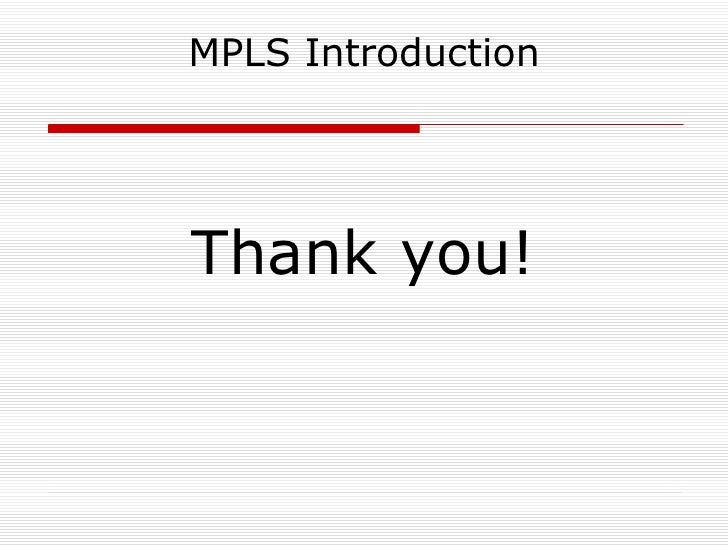



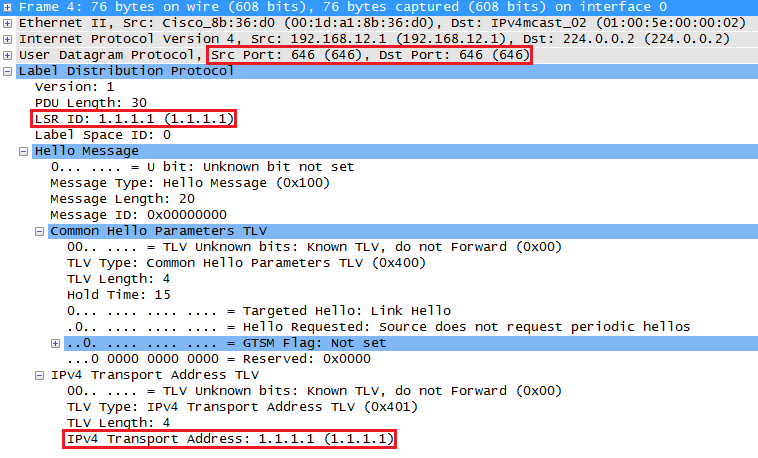
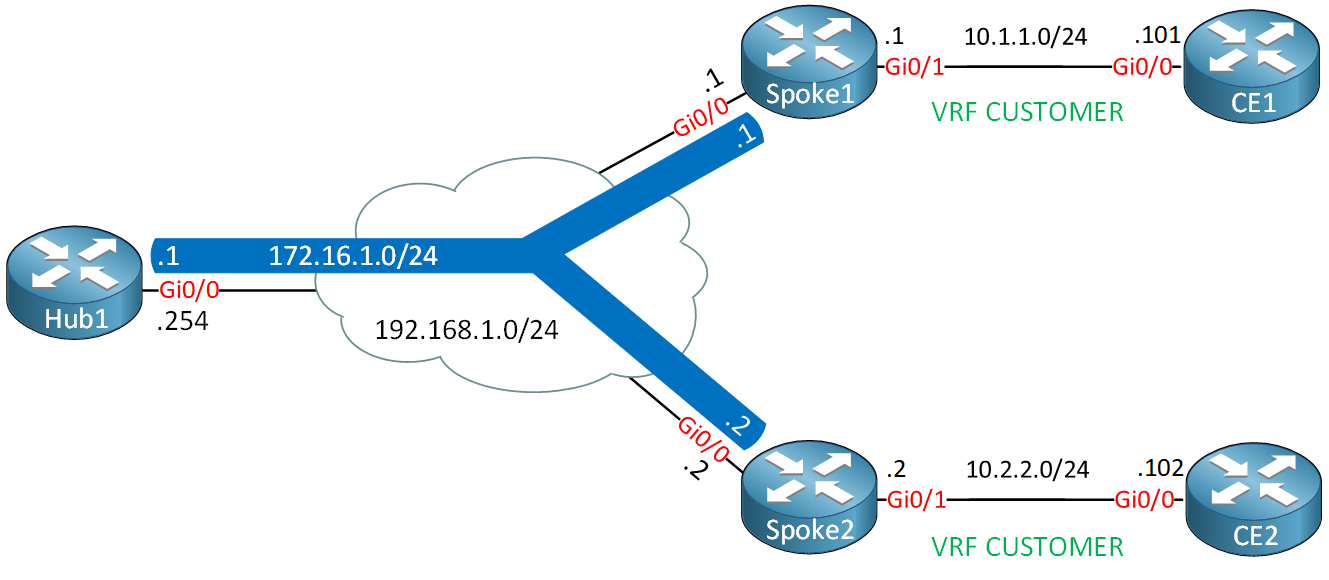
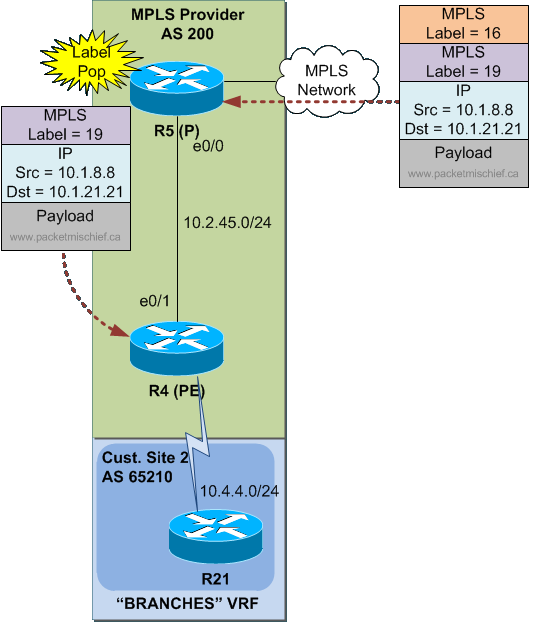

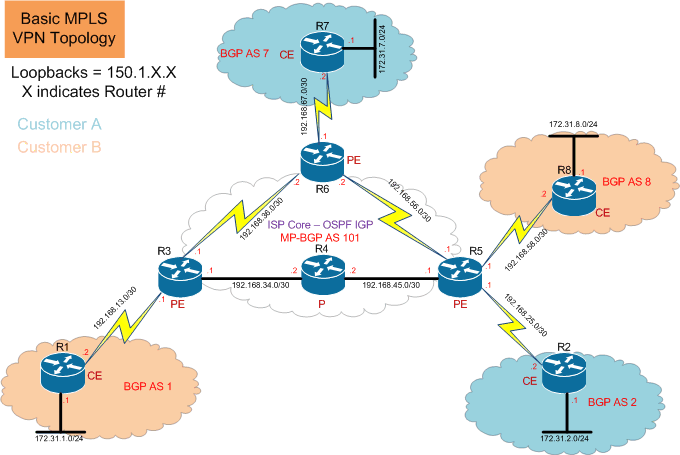

Post a Comment for "43 mpls ldp advertise labels"